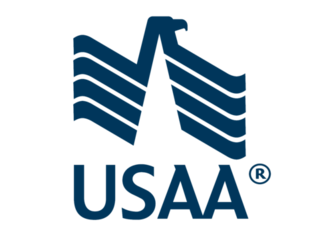6 Best Car Insurance Companies of 2025
What to know about car insurance
- Every state requires car owners to have liability insurance at minimum, except for New Hampshire and Virginia. If you're leasing or paying off your car loan, the lender will also require comprehensive and collision coverage.
- Once your policy is up for renewal, it pays to shop around for better rates with other providers. According to Consumer Reports, drivers who switched providers saved over $460 a year on average.
- Usage-based insurance (or car insurance with telematics) can help you save money but some companies may increase your premiums if they identify risky driving habits. Make sure to read the fine print on these programs before enrolling.
How we chose our top picks
Our writing and editing team independently reviewed 15+ auto insurance companies to ensure the accuracy and reliability of our information. We dedicated 1,000+ hours of research to reviewing over 15 insurers across more than 25 factors.
Read our full methodology to learn more.
Our top picks for car insurance companies
- Amica Mutual - Best Overall
- Progressive - Best Quote Matching Tool
- State Farm - Best for Young Drivers
- Nationwide - Best Usage-Based Insurance Program
- GEICO - Best Mobile App
- USAA - Best for Military Members
- Top marks in customer satisfaction from multiple third-party evaluators
- Free airbag replacement (after it deploys)
- Credit monitoring services and lock replacement for stolen keys
- $1,000 for bail bonds/wage reimbursement if required to appear in court
- Non-binary option for gender
- No rideshare insurance
- Often more expensive than competitors
- Good driving rewards are gift cards, not premium discounts
- A.M. Best Rating
- A+
- Crash Network’s Insurer Report Card
- B+
- J.D. Power U.S. Auto Claims Satisfaction Study
- Above average (746/1,000)
- J.D. Power U.S. Insurance Shopping Study
- N/A
- NAIC Complaint Index
- Better than most (0.57)
- Discounts
- 19 discount options, including legacy discounts for drivers whose parents have been insured with Amica for at least five years
Why we chose it: Most car insurance companies offer similar coverage benefits. One factor that sets them apart is how they manage customer claims. Amica Mutual earned high marks in several customer satisfaction assessments, including nationwide surveys from consumers and auto repair shops, and complaint records with state regulatory agencies.
Amica Mutual ranks 2nd in J.D. Power's 2024 U.S. Auto Claims Satisfaction Study, following NJM Auto Insurance, which only operates in five states. This survey measures the consumer's experience filing a claim, communicating with the insurer, and their satisfaction with the settlement. Amica also had the highest customer satisfaction score in the New England region for 11 years in a row in J.D. Power's U.S. Auto Insurance Study. This survey takes a comprehensive look at auto insurers across U.S. 12 geographic regions, measuring customer experience regarding pricing, coverage benefits and digital tools.
Amica is also well-regarded by repair shops nationwide for its handling of repairs and payments once a car is in the shop. CRASH Network awarded Amica a B in its most recent Insurers Report Card. This rating is rarely given out for insurers of Amica's size — the largest insurers nationwide received poor grades (C or less).
Finally, the insurer's complaint ratio with the National Association of Insurance Commissioners (NAIC) is 0.57, which means that it has fewer recorded complaints than other companies with a similarly sized market share.
- Name Your Price tool matches consumers with the right policy for their budget
- GAP insurance, pet injury coverage and rideshare coverage for Uber and Lyft drivers
- Loyalty Rewards program helps get a lower rate
- Loyalty Reward program
- Often more expensive than competitors
- Risk factors recorded by the telematics program might raise premiums
- Coverage for OEM parts only available for motorcycle insurance
- A.M. Best rating
- A+ (Superior)
- Crash Network’s Insurer Report Card
- C
- J.D. Power U.S. Auto Claims Satisfaction Study
- Below average (672/1,000)
- J.D. Power U.S. Insurance Shopping Study
- Below average (645/1,000)
- NAIC Complaint Index
- Better than most (0.61)
- Discounts
- 18 including discounts for automatic and paperless statement, continuous coverage, and teen and student drivers
Why we chose it: Progressive offers the best customizable premiums by means of its Name Your Price tool, which allows drivers to pick coverage that fits in their budget.
With the Name Your Price tool, customers are able to establish a budget, and Progressive creates a policy to match it. From there, policyholders can pick and choose coverage limits and deductibles.
For example, you can quickly and easily increase the deductible for collision coverage and save on your premium. However, note that if you're in an accident, you'll have to pay a higher amount before the insurance kicks in.
In terms of savings, Progressive's telematics Snapshot program uses driving data such as acceleration, braking and distance to provide drivers a discount for safe driving behavior. It also gives customers the option of joining its deductible savings bank. This program puts $50 into savings every six months that go by without a claim or driving violation until reaching its limit. Then, if you file a claim, your deductible will already be paid for.
Read full review of Progressive Car Insurance
- Multiple discounts opportunities for young drivers that offset the high rates for that age range
- Rideshare and classic car insurance coverage
- Premiums won't increase based on telematics data
- Third position in J.D. Power's Insurance Shopping Satisfaction Study
- Often more expensive than competitors, particularly for drivers with poor credit
- No accident forgiveness benefit and GAP insurance
- No opportunities to qualify for a deductible waiver
- A.M. Best rating
- A++ (Superior)
- Crash Network’s Insurer Report Card
- C-
- J.D. Power U.S. Auto Claims Satisfaction Study
- Above average (710/1,000)
- J.D. Power U.S. Insurance Shopping Study
- Above average (699/1,000)
- NAIC Complaint Index
- Better than most (0.84)
- Discounts
- Over 12, including discounts for safe driving, loyalty, low-mileage and teen/student drivers
Why we chose it: Teen drivers are generally the most expensive to insure, but State Farm stands out from other insurers by offering teen drivers steep discounts that can offset their otherwise high premiums.
With the Good Student Discount, policyholders can save up to 25% if their teen driver keeps a GPA of 3.0 or higher until they turn 25. Other competitors only discount 5% for good grades or don't disclose how much of a discount you'd get in the first place.
Drivers under 21 can also get a discount for taking a driver’s ed course. Additionally, the “Student Away at School” discount helps customers save by only covering the student while at home on vacation and holidays.
State Farm's rental car and travel coverage pays up to $500 per loss for expenses like hotel and food, as well as a rental car while your car is in the shop, when you're in an accident 50+ miles from home. Other insurers cover road assistance if your car breaks down (e.g., you get a flat tire, need a jumpstart or lock your keys inside the car), whereas State Farm’s travel expenses coverage extends its roadside assistance if you're in an accident that's covered by your comprehensive and collision insurance.
- Top position in J.D. Power's Usage-Based Insurance Satisfaction Study
- Often less expensive than competitors, particularly for drivers with poor credit
- Guarantees your rates won't increase for enrolling in its telematics program
- Policyholders can't file a claim on the mobile app
- No automatic crash detection tools in the SmartRide telematics program
- Unavailable in Alaska, Hawaii, Louisiana and Massachusetts
- A.M. Best rating
- A (Excellent)
- Crash Network’s Insurer Report Card
- C
- J.D. Power U.S. Auto Claims Satisfaction Study
- Above average (728/1,000)
- J.D. Power U.S. Insurance Shopping Study
- Above average (671/1,000)
- NAIC Complaint Index
- Better than most (0.70)
- Discounts
- 10% including discounts for safe driving history, good grades, policy bundles, automatic payments and paperless statements
Why we chose it: Nationwide boasts the top-ranking usage-based insurance (UBI) plan in J.D. Power's most recent Customer Satisfaction Study, a study that surveys auto insurance policyholders in 11 different regions in the U.S.
Nationwide's UBI plan includes two programs. The first, SmartRide, rewards safe driving behavior. Customers get 10% off just for signing up and can save up to 40% for safe driving. The second program is SmartMiles, which charges you based on how much you drive — starting with a base rate of $60 plus a variable rate of $0.07 per mile driven every month.
It’s worth mentioning that Nationwide's SmartRide program lacks crash detection, a feature that other competitors offer. As the name implies, this detects when you are in an accident — whether you’re the driver or passenger — and sends you a notification to contact roadside assistance or 911.
- Second place in J.D. Power's Usage-Based Insurance Satisfaction Study
- Over 23 discount opportunities to get a better rate, including a discount for military personnel
- Typically offers low to moderate premium rates for a variety of driver profiles
- Rideshare coverage is only available through a commercial auto policy
- No GAP insurance and new car replacement coverage
- Risk driving recorded by the telematics program could increase your premiums
- A.M. Best rating
- A++ (Superior)
- Crash Network’s Insurer Report Card
- C-
- J.D. Power U.S. Auto Claims Satisfaction Study
- Below average (692/1,000)
- J.D. Power U.S. Insurance Shopping Study
- Below average (671/1,000)
- NAIC Complaint Index
- Better than most (0.75)
- Discounts
- 23 discounts including safe and defensive driving, federal employee, military deployment and good student discounts
Why we chose it: GEICO offers a completely digital experience that is ideal for those who would rather go online than call customer service. Not only can you access digital insurance cards and file claims, the app also connects to CARFAX, which gives you access to your vehicle’s history and allows you to check for recalls.
GEICO policyholders can use the company’s app to request roadside assistance, upload photos to get damage estimates and submit and manage their claims. The app can also serve as a type of “agent in your pocket” that answers insurance-related questions and helps you stay on top of your car's history, sending you alerts about recalls or when it's time for maintenance.
GEICO offers a slew of discounts to help customers get lower rates, including notable discounts for the military — one for being an active or retired member and one in case of emergency deployment. These can save policyholders 15% and 25%, respectively. Of all the companies on our list, GEICO is one of only two that offer such discounts for military personnel.
- One of most affordable car insurance companies in several premium surveys
- Top marks across several J.D. Power Customer Satisfaction Surveys
- Premiums won't increase based on negative telematics data
- Limited to military members, veterans and their immediate families
- Low rating in CRASH Network's Insurer Report Card
- A.M. Best rating
- A++ (Superior)
- Crash Network’s Insurer Report Card
- D+
- J.D. Power U.S. Auto Claims Satisfaction Study
- Above average (726/1,000)
- J.D. Power U.S. Insurance Shopping Study
- Above average (732/1,000)
- NAIC Complaint Index
- Worse than most (1.31)
- Discounts
- 15 discounts, including discounts for newer vehicles, if you're deployed and storing your car and if your parents already have a USAA policy
Why we chose it: USAA caters specifically to members of the military, their families and veterans and has one of the highest customer satisfaction ratings of all the companies we reviewed.
USAA placed second nationwide in J.D. Power's 2023 U.S. Auto Claims Satisfaction Study, with only Amica Mutual scoring higher. In a separate study that reviews customer satisfaction across 12 regions, USAA outperformed every provider. (Note that USAA did not earn a rank because, according to J.D. Power, it doesn’t meet the study award criteria.)
Surprisingly, USAA did not earn a good rating from auto repair shops that aren't part of the insurer's network. On the other hand, body shops that had a direct repair relationship with USAA gave it a B.
Like other companies, USAA offers a variety of discounts with some unique features. These include a car storage discount for members who store their vehicles at a military base or installation. In this case, customers get up to 60% off their policy and could save up to 15% on comprehensive coverage. It also offers a low-mileage discount that both stateside and deployed members can benefit from.
Read full review of USAA Car Insurance
Other car insurance companies we considered
Erie
Why it didn't make the cut: Despite excellent customer satisfaction ratings, affordable rates and unique benefits such as a fixed insurance rate, Erie only operates in 12 states and Washington, D.C., excluding much of the country and major population centers like New York.
The company has a low complaint record with the NAIC and ranked third in J.D. Power’s 2024 U.S. Auto Claims Satisfaction Study. More importantly, the insurer earned a rare A- rating from body shop owners in CRASH Network's Insurer Report Card.
Farmers
Why it didn't make the cut: Farmers Insurance has a high complaint index with the NAIC and it's one of the most expensive insurers on the market. That said, policyholders may be able to offset this cost with special offers that not many other insurers offer, such as discounts for essential workers and first responders.
Lemonade
Why it didn't make the cut: Lemonade car insurance is only sold in eight states and policyholders can't opt out of its telematics programs — a core component of the company's business model. It determines your premiums by tracking how, when and where you drive, among other risk factors. This may result in an increase to your rate if the company determines you're a high-risk driver.
Insurify
Why it didn't make the cut: Insurify is an online marketplace, not an insurance provider. Insurify's provider network has over 120 insurance companies (including the largest providers like State Farm, Progressive, Allstate, Liberty Mutual and Farmers), making it an excellent tool to compare multiple providers in one place. That said, we still encourage you to get a quote directly from insurers because third-party quotes may not always match the price given directly by them.
Allstate
Why it didn't make the cut: Based on third-party surveys, Allstate is one of the most expensive auto insurers on the market, and we didn't identify benefits that set it apart from other insurers.
Allstate's auto insurance policies are worth considering if you can get a good deal (particularly for homeowners). Unlike other providers, Allstate’s home insurance policies include flood protection, making bundling a very attractive alternative.
What you need to know about car insurance
Auto insurance helps you cover losses stemming from theft, collision, natural disasters and liability involving your vehicle. In simple terms, you pay a premium to an insurer, and it pays for losses as stipulated in your policy.
Liability policies don’t require you to pay a deductible, but other coverages typically do. Your deductible is how much you must pay out of pocket — from $250 all the way to $2,000 — before the insurer covers the rest. Policies with higher deductibles will cost less than those with lower ones because you’ll assume more of the cost of repair or replacement in the event of an incident.
Types of car insurance coverage
Here are common types of auto insurance coverage you'll encounter when considering policies:
- Liability insurance includes property damage and bodily injury liability. It only covers damages that you cause others in an at-fault accident.
- Uninsured/underinsured motorist coverage covers medical bills and repairs if you’re in an accident caused by another driver with little or no insurance. It can also cover the cost of damages that result from a hit-and-run.
- Comprehensive coverage pays for repairs if your vehicle is damaged by something other than another vehicle (including hail, fire, floods, theft and vandalism).
- Collision coverage covers repair costs to your vehicle if you're involved in an at-fault accident.
- Full coverage car insurance is a term referring to having comprehensive and collision policies along with the state minimum.
- Medical payments coverage pays for medical expenses if you or your passengers are injured in an accident.
- Personal injury protection (PIP), also known as no-fault insurance, covers medical bills, loss of wages and funeral costs for you or your passengers if you're in an accident, regardless of who is at fault.
- Guaranteed asset protection (GAP), pays the difference between how much you owe on your vehicle and how much your insurance will pay out if your vehicle is totaled or stolen.
In addition to these, optional insurance riders can give you additional coverage such as roadside assistance, glass replacement and rental reimbursement at an extra cost.
How much is car insurance?
Car insurance costs vary greatly based on a wide range of factors. In fact, the NAIC explicitly mentions that state-to-state comparisons are difficult to make because of the high degree of variability in insurance requirements and other factors. According to Consumer Reports, car drivers in Florida shell out nearly $4,000 a year, while Vermont drivers typically pay less than $1,500.
To determine your premium, insurers consider your driving history, the type of vehicle you own, where you live, your credit score and even where you park. Your choice of deductible will also affect the cost of your policy — the higher the deductible you chose, the lower your rate.
According to third parties, the average cost of car insurance with full coverage is around $1,800 to $2,000 annually; however, state minimum coverage averages around $600 annually. The best way to see how much you’ll pay for car insurance is to get quotes from several companies.
How to lower your car insurance premium
There are things you can do to lower the cost of your car insurance. You may already know about bundling, but there are other strategies to use to help offset the high cost of insurance.
Bundle insurance policies
On average, bundling home, renters, auto or life insurance with the same provider can save you over 15% on your combined premiums.
Increase your deductible
Increasing your deductible can make your payment more affordable. However, you want to ensure that you can afford to pay it out of pocket in case you’re in an accident.
Review your policy regularly
Reassessing your current policy before renewal, or whenever you make life changes that affect who is driving your car, can ensure you’re getting the type and level of car insurance coverage you need and can afford. (If you’re interested in changing insurers to get a lower price, take a look at Money’s guide on how to switch car insurance.)
Apply for discounts
Companies offer discounts to policyholders who maintain a clean driving record (e.g., no speeding tickets, DUI, etc.) and drive vehicles with good safety features. Although discounts vary from one lender to the next, common ones include safe driver, multi-vehicle and multi-policy discounts.
Reduce coverage
You can reduce your annual premium by dropping collision or comprehensive coverage on vehicles that don’t have a lease or loan.
Consider usage-based insurance
Usage-based insurance (UBI) policies (also called telematics programs) take into account your current driving habits to determine your premium. They measure how fast you drive, how quickly you turn and how abruptly you brake, among other risk factors.
Depending on your driving habits, you could earn a discount on your policy. Make sure to ask whether negative driving marks will increase your rates and how the insurer will protect your personal data.
Shop around for cheaper rates
Comparing online quotes from at least three different insurance providers can help you get a low rate without sacrificing important coverage. Using a car insurance comparison tool can help match you with a provider that offers the best policy for your vehicle.
Besides average rates, consider the available discounts, coverage limits and deductible options of each company when shopping for car insurance coverage. If you don’t know where to start, an independent insurance agent or broker could help you narrow down your options.
If you want to read more about savings opportunities with online insurers, read our guide to the best cheap car insurance companies.
How to get car insurance
Whether you’re getting car insurance for the first time or shopping around for a new policy, it’s a good idea to review the steps to buying car insurance. While the exact process may vary depending on the insurance company you select, here’s what you can expect.
- Gather your personal and vehicle information: You’ll need your driver's license, vehicle registration and a copy of your existing insurance declaration page if the vehicle is already insured.
- Get quotes: Since insurance rates can vary drastically, we recommend you get quotes from at least 3-5 insurers.
- Compare your options: As you’re comparing premiums, be sure to look at the type of coverage and limits. It’s important to compare apples to apples.
- Read customer reviews and third-party ratings: Read reviews from current and previous customers and note any negative patterns or red flags.
- Don't cancel your old policy until the new one is active: You don’t want to cancel your old policy until you have your new one in place, otherwise you can have a lapse in coverage.
Car Insurance FAQs
What is liability car insurance?
Bodily injury liability protects drivers if they're at fault for an accident by covering the medical expenses of the other driver or their passengers.
Property damage liability, on the other hand, protects at-fault drivers by covering the cost of the other person's property repairs.
How much is car insurance a month?
According to multiple third-party sources, the national average cost of car insurance is around $2,000 annually, while state minimum coverage averages around $600 annually. States like Michigan and Florida have some of the highest rates in the country, while others like Maine and Ohio offer the lowest.
What is comprehensive car insurance?
How much car insurance do I need?
If you want any additional coverage, it's up to you to decide how much you should add to your policy.
How much is car insurance for a 16-year-old?
Since younger drivers have less experience and are statistically more likely to get into accidents, insurers will charge them higher premiums to account for high risk.
How we chose the best car insurance companies
For this roundup, we focused on insurers that were widely available in the U.S. Unfortunately, this forced us to exclude regional insurers that excelled in several of our metrics.
Notwithstanding, we strongly encourage you to get quotes from household names and local insurers. You may find a better rate and overall better customer experience with a small, regional provider.
The team at Money reviewed 23 auto insurers based on 25+ factors, which we grouped into five broad categories: customer satisfaction, pricing, coverage options, user experience and financial stability. We then assigned a percentage value to each category, giving the most weight to customer satisfaction and cost, and rated insurers on a one-to-five scale.
- Customer satisfaction: We considered the volume of complaints recorded with the National Association of Insurance Commissioners (NAIC) and rankings from three J.D. Power Customer Satisfaction Surveys (the U.S. Insurance Shopping Study, the U.S. Auto Insurance Study and the U.S. Auto Claims Satisfaction Study). We also looked at the CRASH Network’s Insurer Report Card, which rates insurers based on feedback from automotive collision repair professionals.
- Cost: We surveyed auto insurance rates from third-party surveys, noting which insurers typically offered the most affordable and most expensive rates. We also took into account the number of discount opportunities available to policyholders.
- Coverage options: Our top picks offer comprehensive, collision, liability, uninsured/underinsured motorist, medical payments coverage, personal injury protection, and riders such as roadside assistance, coverage for travel expenses, ridesharing, pet injury, and classic cars.
- User experience: For this category, we considered how easy it is for customers to get a quote, file a claim and manage their policy with each company. We also considered availability and excluded insurers that only operated in a small number of states.
- Digital tools: Car insurance companies that allow policyholders to file car insurance claims via apps ranked higher on our list. We also looked at the insurer's usage-based insurance program, noting whether the company explicitly states that they won't increase your premiums for poor driving.
- Financial stability: An insurance company’s financial stability can be gauged by its AM Best financial strength rating. We gave the most points to insurers that earned an A++ rating from A.M. Best, the benchmark for financial stability in the insurance industry.
Summary of our top picks for car insurance
- Amica Mutual - Best Overall
- Progressive - Best Quote Matching Tool
- State Farm - Best for Young Drivers
- Nationwide - Best Usage-Based Insurance Program
- GEICO - Best Mobile App
- USAA - Best for Military Members











